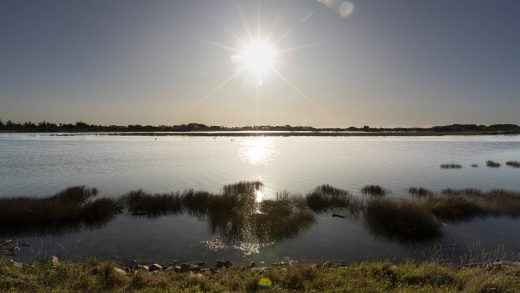
On Nov. 28, right on schedule, the Nuclear Waste Management Organization (NWMO) triumphantly declared they have picked their site for the future Deep Geological Repository (DGR) for all of Canada’s high-level nuclear waste.
NWMO is a federal government-created consortium of companies that own and must manage Canada’s nuclear waste — 130,000 tonnes (and counting) of highly toxic radioactive materials currently sitting in temporary storage at reactor sites. Their chosen repository site is near Revell Lake, between Ignace and Dryden, Ont. The Revell area is on the territory of Treaty 3 First Nations, the closest being Wabigoon Lake Ojibway Nation (WLON). It sits at the headwaters of Wabigoon and the Turtle-Rainy River watersheds — flowing north and west, eventually into Lake Winnipeg, via the English-Wabigoon system, Lake of the Woods and the Winnipeg River.
In July, the town of Ignace signed a “willingness declaration” agreeing to host a DGR in the Revell area (notwithstanding that Ignace is not even on the same watershed as the Revell site), and only days before the site selection announcement, headlines across multiple news outlets suggested that WLON had also declared itself to be a willing host.
In fact, WLON’s news release about its recent community vote says “the yes vote does not signify approval of the project.” It does say that the nation agrees to further study of the site. This is an important distinction. (The Nation has also since stated that the project will be subject to Wabigoon’s own regulatory assessment and approval process. What this means legally in terms of WLON’s ability to reject the project in the future is not currently known).
NWMO’s process says it must receive a “compelling demonstration of willingness” from a host community before proceeding to site characterization (further geological study of the chosen site to see if it’s even suitable for keeping nuclear waste out of groundwater and the environment for the required hundreds of thousands of years).
NWMO says it is “confident” that specific location studies will prove that their out-of-sight, out-of-mind concept of deep burial of some of the most dangerous toxins on Earth will be safe. They’ve been expressing that cavalier confidence for decades, lulling Canadians into believing that it’s fine to keep producing the waste because eventually it will be dealt with.
A quick media scan shows many casual observers leaping to the conclusion that Canada’s nuclear waste problem is “solved,” erasing a major obstacle to a costly and dangerous expansion of nuclear power. Nuclear promoters are encouraging this misleading assumption.
Without a doubt, nuclear waste owners to the south are watching these developments closely. U.S. utilities and government have even more waste in temporary storage and no permanent solution in sight.
But is the waste problem solved? Even if (predictably), the industry deems its concept technically feasible, and even if WLON eventually decides it is a “willing host,” what about all the other communities impacted by this decision?
They must have their say. This means everyone along the transportation routes from southern Ontario and New Brunswick — let’s remember we are talking about three massive shipments per day for the next 40 years just for existing waste on the sometimes-treacherous highways of northern Ontario.
It also means all the downstream communities (including in Manitoba) whose waters would be affected by any release of radioactivity. Many Treaty 3 First Nations near the Revell site as well as the Grand Council of Treaty 3, Nishnawbe Aski Nation and Anishinabek Nation have already made statements opposing transportation and burial of nuclear waste in northern Ontario.
It’s telling that not a single community or First Nation other than Ignace and Wabigoon Lake has voiced support for the Revell site.
Since Ignace first expressed interest in 2009, both of those communities have been actively courted by the NWMO. Cash and other incentives are known to have been provided to Ignace. Little is publicly known about any agreements that may exist between NWMO and WLON. Those details may never be known as NWMO is mysteriously exempt from freedom of information requests (even though it claims to be transparent).
What is clear is that NWMO has not yet achieved its necessary goal of a “compelling demonstration of willingness.” What it has done is corrupted its own process by claiming consent where none exists, with the blessing of the federal government. Perhaps worst of all — and one might say this is historically predictable — it has created a situation in which neighbouring communities may end up pitted against each other.
Meanwhile, the nuclear waste problem is not “solved.”
Anne Lindsey volunteers with the No Nukes MB campaign of the Manitoba Energy Justice Coalition and has been monitoring nuclear waste since the 1980s. She lives in Winnipeg and spends time in Northwestern Ontario.


